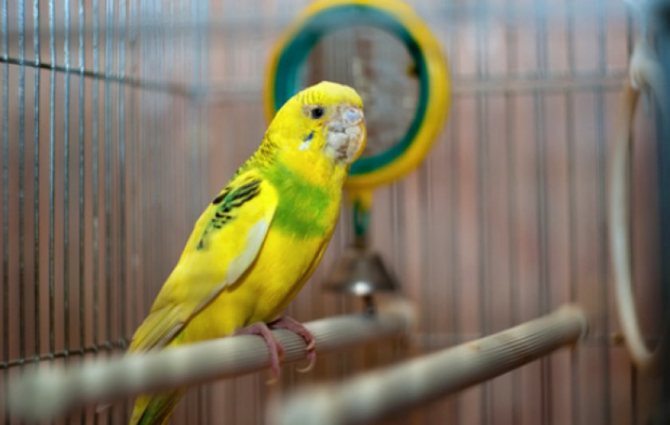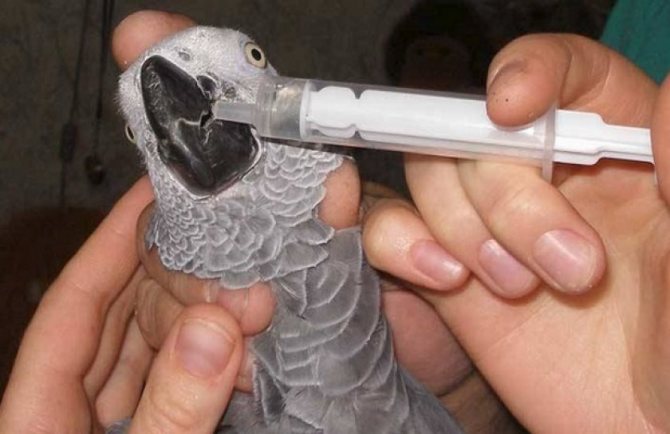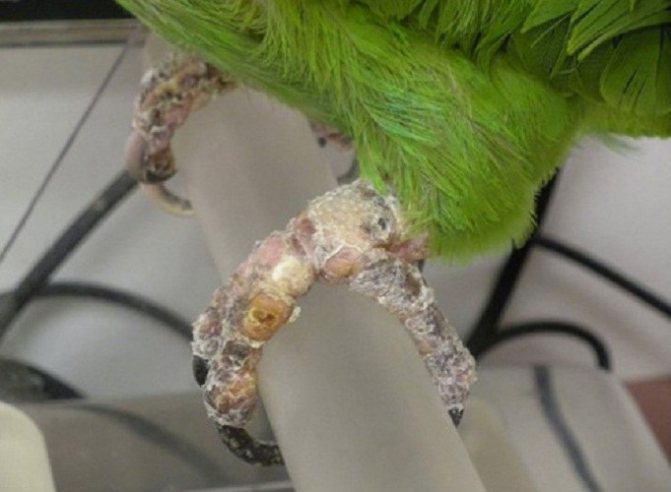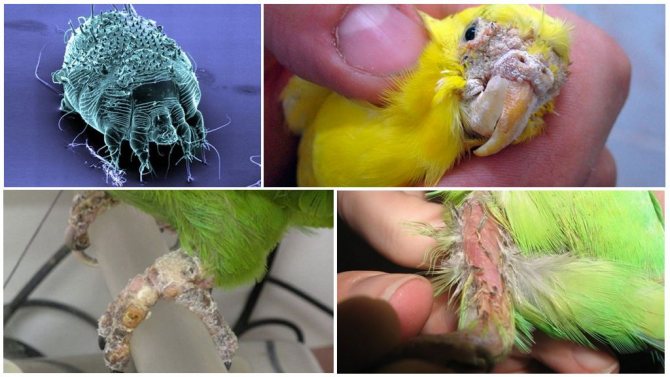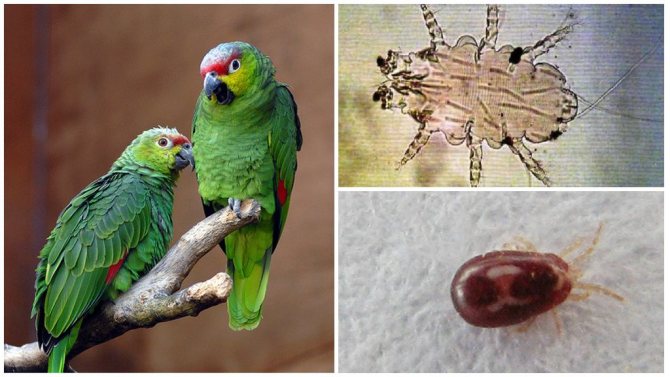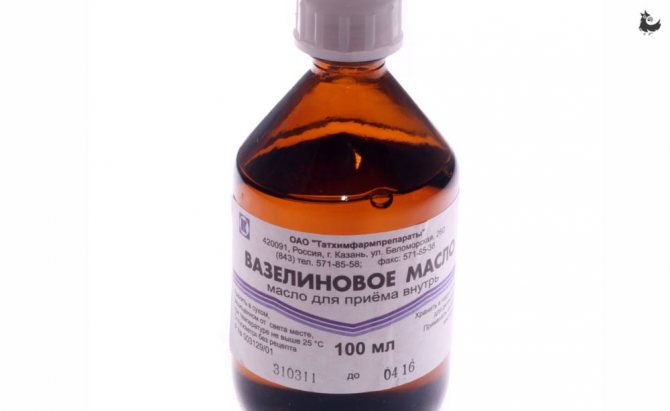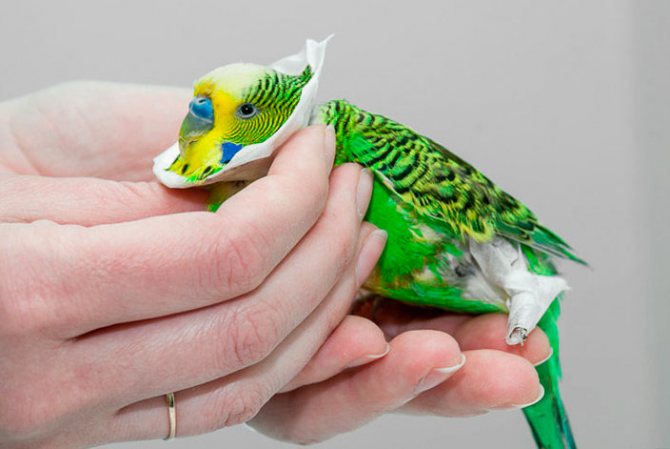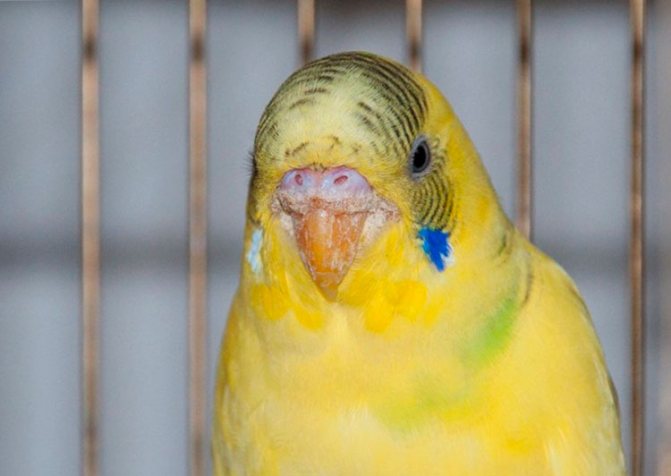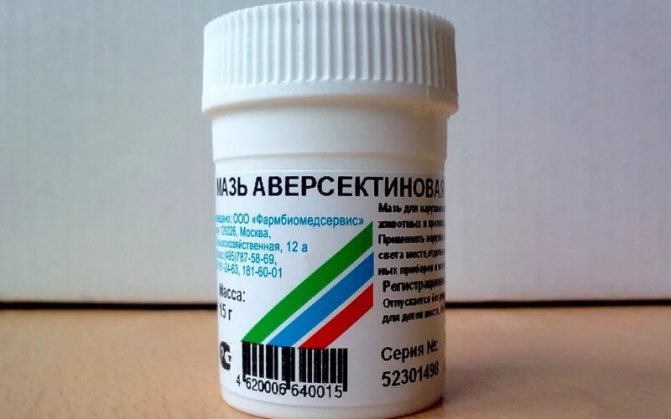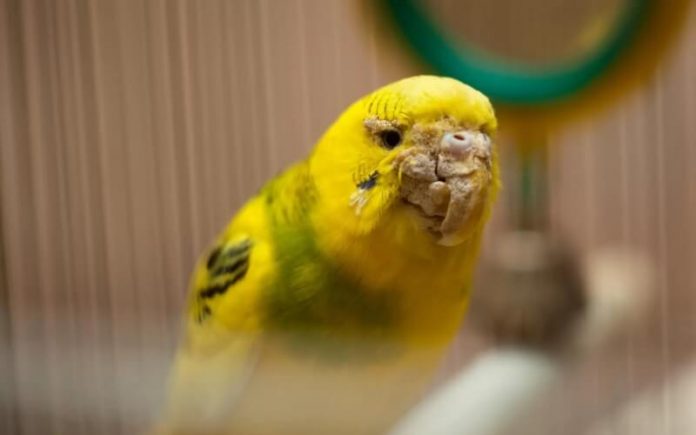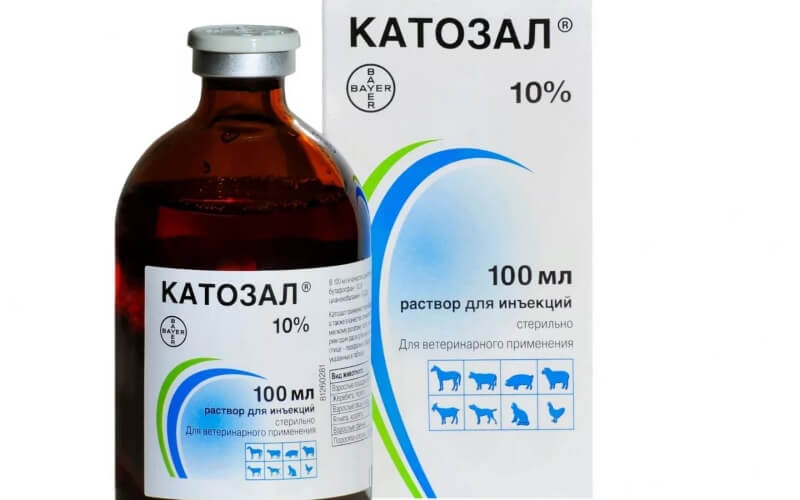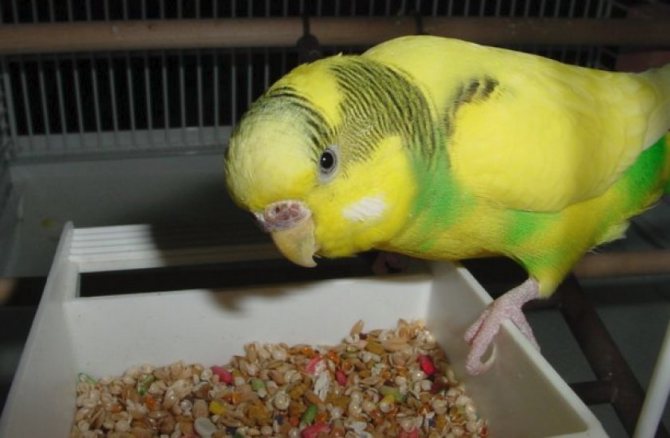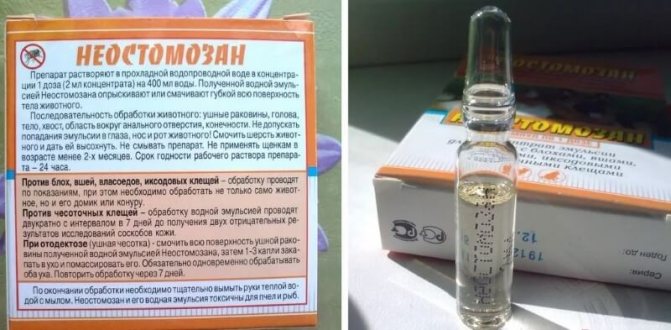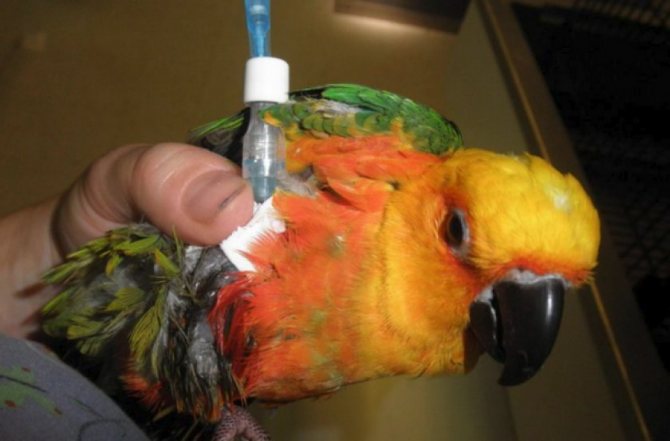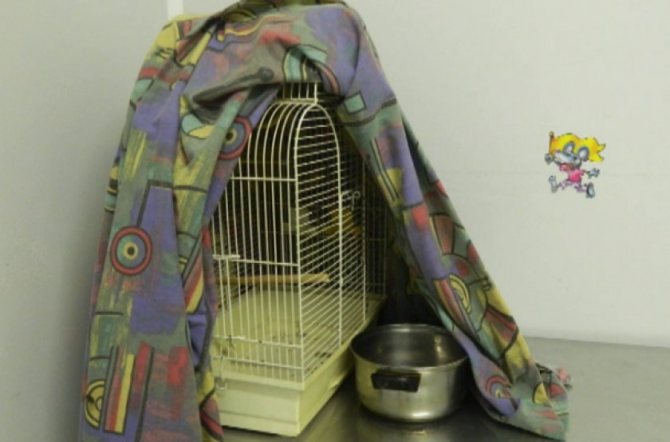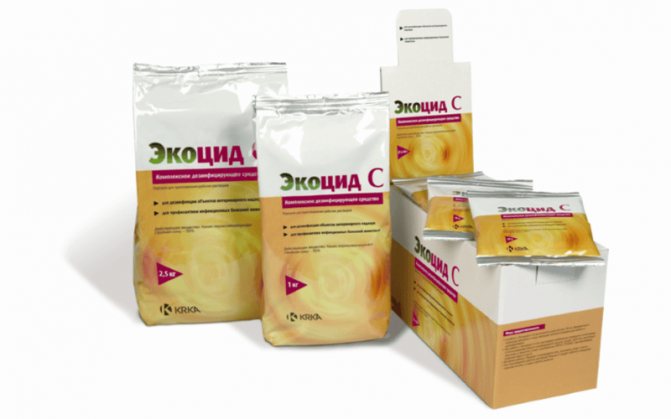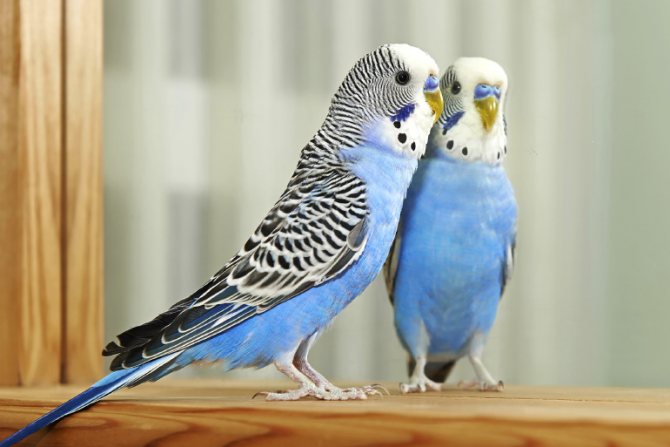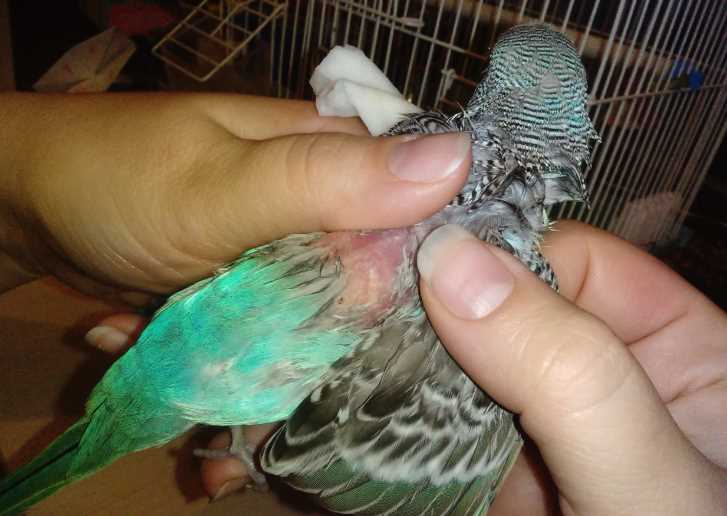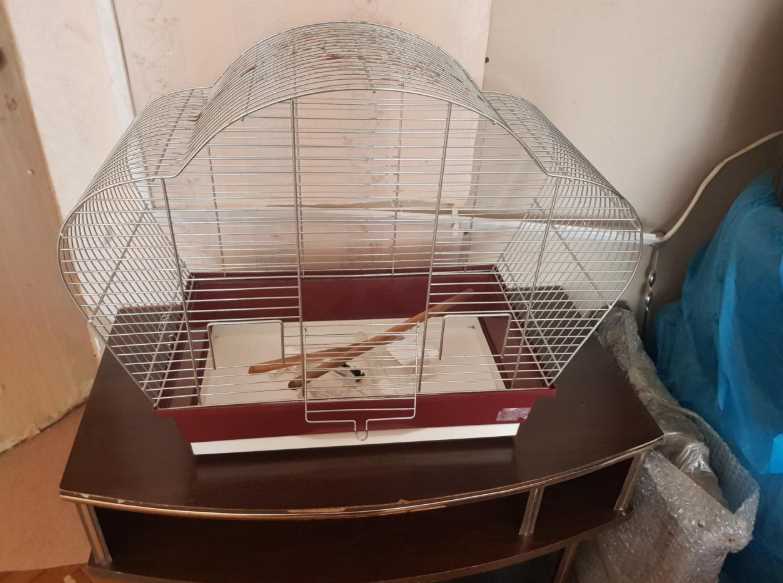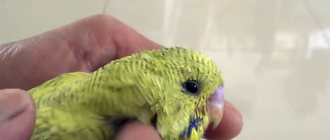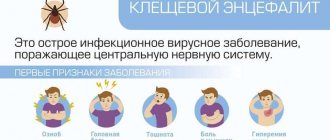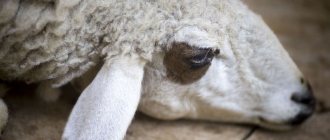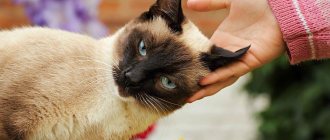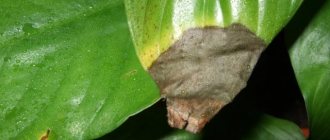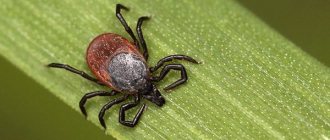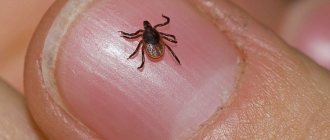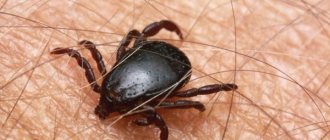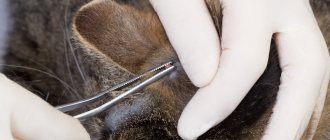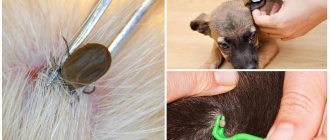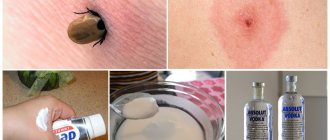Parrots, for all their exotic appearance, are prone to diseases familiar to the inhabitants of cold regions. One of these diseases is mites in parrots.
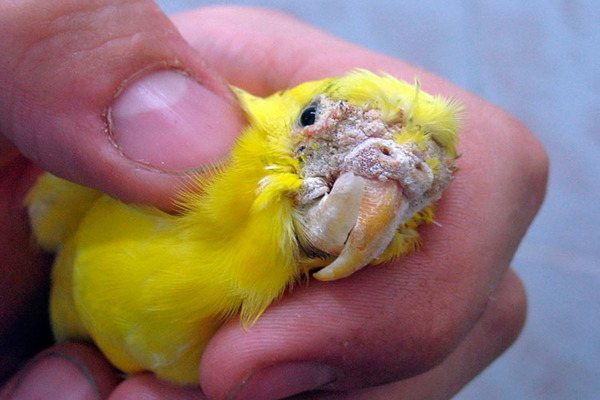
In fact, ticks are only animals that parasitize birds, which the owner needs to get rid of immediately. Otherwise, parasitism will lead to serious health problems for the bird, some of which are fatal.
Characteristics of the disease
The tick is a parasitic insect. Ticks in parrots look like bugs with a rounded body, small in size (a large individual reaches half a millimeter). The parasitic effect consists in eating the upper layer of the skin - the epidermis, and other tissues similar in cellular composition.
The life cycle of the parasite consists of four stages - the appearance of the larva, protonymph, teleonymph, and the development of an adult. In the future, eggs are laid and the offspring repeat the cycle. The process moves quickly, mites multiply rapidly.
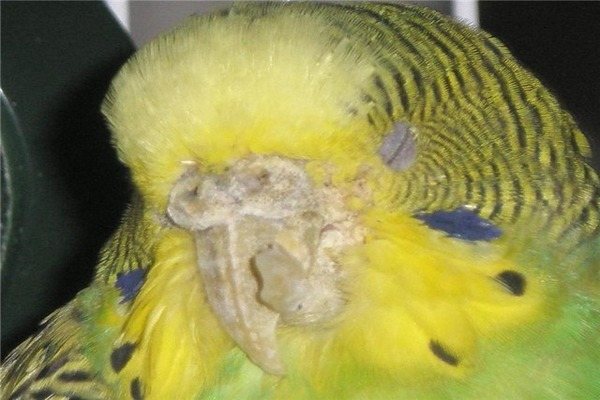

Parrots have four types of mites, among them:
- Gamaz
Easiest to spot. Parasites are located on the body and objects in the cage, giving themselves out.
- Per'evoy
The presence of such guests is checked by the condition of the wings. There is another definition: quill mite. It is not difficult to guess that these spoil the feather cover. Sometimes the bird stops flying for this reason. But such "friends" are rare.
- Scabby
This type is common. Forces the bird to constantly scratch, often leads to death.
- Tracheal
It affects the mucous membrane of the trachea, disrupting the breathing process of the bird.
Downy eater
Malofagosis is a parasitic disease that causes a downy eater. The insect looks like a louse. Its body is elongated, about 1-3 mm, light brown in color. Pests feed on particles of feathers and scales of the epidermis. Insects parasitize at the base of the feather. On examination, there can be seen clusters of eggs in the form of balls, and many holes in the feathers.
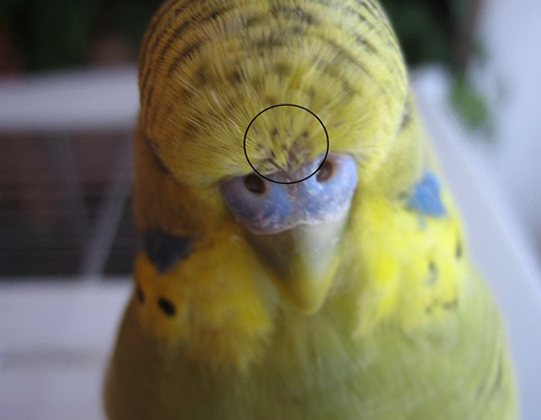

In the process of infestation by chewing lice, parrots have a decrease in appetite, restless behavior, itching and dermatitis. With advanced mallophagosis, inflammation of the skin develops, followed by the loss of feathers on the back, abdomen and neck. The infected bird loses body weight, weakens and loses the ability to resist various infections. This is especially dangerous for chicks.
Why does a tick appear
After the signs of a tick have appeared, the owner has a question - how the parasite has taken root on the body of the bird. The answer is simple - a budgerigar mite takes root in case of insufficient hygiene.
Compliance with hygiene implies not only giving the bird the opportunity to wash (for this purpose, bathing suits are installed in the houses and bathing days are arranged), but also periodic cleaning of the cage and all accessories and toys inside it. It is wise to douse the toys with boiling water from time to time - this prevents the development of microbes and a favorable environment for the parasite.
They mean: ticks more often "attack" individuals of small size. Large birds are infested less often by parasites.
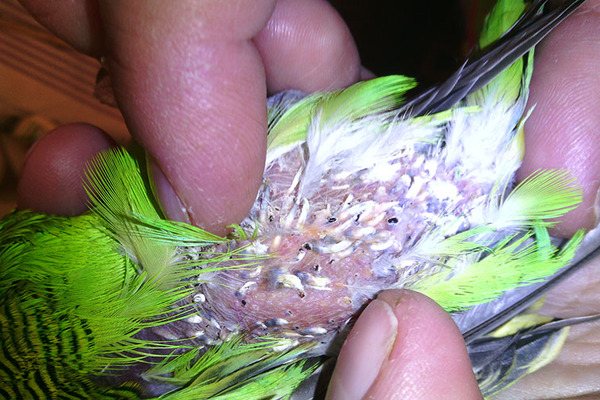

Why is itch mite dangerous?
The scabies mite, or knemidocoptosis, is a fairly common phenomenon that occurs on the body of parrots. The disease is life-threatening for ornamental birds.Insects gnaw tunnels in places where feathers are absent (beak, paws, wax, around the eyes and cloaca), live in them, and reproduce. At night, they get out of their stores and suck the tissue fluid of the birds. At the same time, parrots have severe itching and burning.
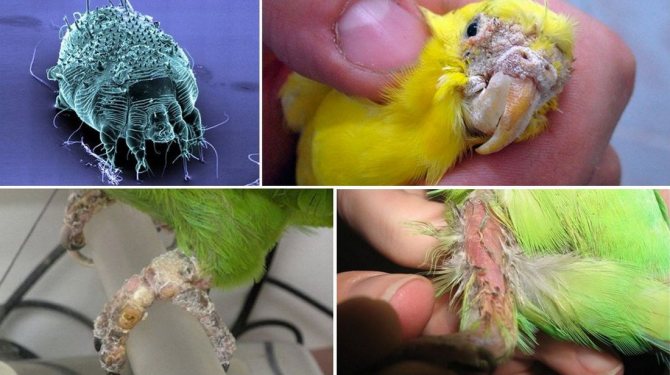

Also, the secreted waste products of ticks provoke general intoxication of the body of birds, leading in an advanced stage even to their death. For people, the itch mite does not pose a danger. Once on a human body, he can live for several more days and then die, since he is not adapted to feed on his blood.
Important! It is not recommended to diagnose parrots on your own. It is necessary to seek help from a specialist who can prescribe the correct treatment.
Parrot mite: symptoms
It doesn't take much poultry experience or special education to detect tick symptoms in a parrot. The infected pet scratches, does it often. Noticing this, the owner takes the pet in his hands and carefully examines the skin under the feathers. If you have ticks, you can see them with the naked eye.
It is impossible to start treatment, barely noticing scratching. Itching on the skin of a bird is caused not only by parasites, but also by molting, which is natural and occurs from time to time in each individual in its own cycle. The so-called "initial examination" is important.
Symptoms and danger of infection
At first, it can be difficult to understand that the parrot has picked up an unpleasant disease. Pests can live in the body for over three months without showing their presence in any way. Changes in appearance do not appear immediately, and there is nothing special in behavior: healthy birds also often scratch themselves and preen themselves.
Signs by which to determine knemidocoptosis in parrots:
- If the paws are affected, the skin scales rise, the metatarsus becomes tuberous. The bird gnaws its fingers, steps over on the perch, cannot find a place for itself. Gray growths appear, joints become inflamed. Without appropriate treatment, the loss of claws and even the limbs themselves is possible.
- If the scabies mite parasitizes on the beak and beak, their color and shape change. There are wounds and cracks in the corners of the beak. The beak bends, curls, grows faster than usual.
- The cloaca seems to be covered with a coating of lime. This causes a particular inconvenience to the female, she cannot lay eggs.
- The skin around the eyes becomes covered with yellowish scabs, small feathers fall out.
- Ticks can settle on the feathered area of the body. Large pores appear on the skin, crusts accumulate, and the affected areas become inflamed.
The quail mite causes severe itching. The plumage loses its uniform volume and shine, feathers on the tail and wings become fragile, break off, fall out. The parrot plucks out feathers, itches furiously, tearing the skin to blood. This behavior is accompanied by loss of appetite and weight loss. In young individuals, growth slows down, the immune system cannot cope with other diseases.
Note: The diagnosis is made by comparing dropped feathers with those of a healthy bird. The shaft of the diseased feather is dark, filled with a thick mass.
The fact that the bird was killed by a tracheal mite can be assumed by the following symptoms:
- the voice sits down or disappears;
- the parrot throws back its head;
- the beak is open for a long time;
- wheezing difficulty breathing;
- coughing, sneezing;
- discharge of mucus from the beak and nostrils.
In the airways of the bird, epithelium accumulates, mucus fills small passages, obstruction occurs, suffocation - and death.
Common symptoms are lethargy, lack of appetite, interest in toys. Peeling skin, itching, feather loss. All of these types of tick-borne diseases are contagious. If there is a suspicion of illness, the parrot should be left alone in the cage and quarantined.Do not rush to add a new pet to other birds, watch him for a while.
Types of mites in a parrot
First of all, it is useful to clarify that parrot mites are not dangerous to humans. But for birds, these are serious enemies that can cause death. They are different, but the most frequent "guests" are:
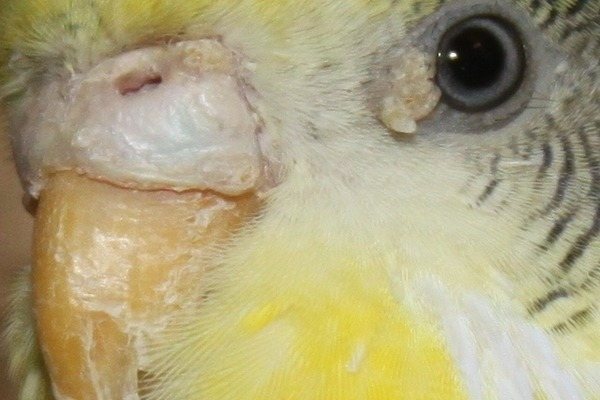

Feather mite in parrots
The species is not so common, but it brings a lot of trouble. The feather mite in parrots "lives" on the skin, parasitizing the shafts of the feathers. The rods are destroyed, the cover begins to fall off. The bird runs the risk of being left without feathers, and, therefore, without the ability to fly and keep warm.
Tracheal mite in parrots
The species parasitizing the tracheal mucosa causes the bird to suffocate. You can notice this if the pet throws back its head and breathes heavily. It is wiser not to believe that it is possible to cure such a problem on your own, but to consult a doctor in advance. The life of a parrot depends on it.
Scabies mite in parrots
Frequent and terrifyingly creepy. The scabies mite in a parrot differs in that it feeds not on the skin tissue, but on the liquid in it. This forces him to gnaw through the tunnels under the skin of the bird. This causes itching.
The subcutaneous mite does not stop at this in the parrot. Every day the parasite poisons the bird with toxins. The skin and horns of the patients suffer noticeably.
Tick diagnosis and treatment
When buying a bird very often, you do not notice that it is affected by a tick or a downy eater. Indeed, it is very difficult to diagnose this disease for a person who has not faced such a misfortune. In this topic, we will try to figure out how to identify this disease in the early stages and possible ways to deal with it. First, let's examine the bird by its external features:
- the bird has not naturally short wings;
- flight feathers and tail are absent;
- she has difficulty flying;
- often itches;
- the bird's appearance is not neat, the feather is shabby.
All these signs should alert you!
Syringophilia
Disease of birds caused by parasitizing of thrombidiform ticks Syringophilus bipectinatus of the suborder Trombidiformes (superfamily Cheyletoidea, family Syringophilidae).
Causative agent. Sexually mature syringophilid mites measuring 1.0 × 0.25 mm, elongated-oval, dark gray. The proboscis is a gnawing type. Legs are short, conical, terminating in crest-like processes. Four long setae extend from the posterior edge of the body.
Developmental biology. Ticks live in the cavities of the ochins of large contour feathers of the body and wings. They live in colonies.
The phases of the egg, larva, protonymph, deutonymph, and imago occur in development. Healthy feathers are affected, penetrating through the slit-like canal of the feather papilla. Possessing long chelicerae, ticks injure and destroy the papilla and feathers, feed on lymph and exudate.
Epizootological data. Chickens, guinea fowls, turkeys, ducks, pigeons and passerines are susceptible to syringophilia. (I will add - all the parrots, corvids (which belong to the passerines), I have no data on the predators, but for sure they are too. Z)
Patients with syringophilia are the source of invasion.
In the cold season, the disease occurs sporadically and the Syringophilus bipecti tick takes on the greatest development in the warm season.
The extent of invasion is often low, but under favorable conditions the disease can take on the character of an enzootic outbreak. Ticks are not resistant to unfavorable environmental factors.
Outside the host's body at room temperature, they survive up to 7 days, and in the quills of fallen feathers - up to 14 days.
Symptoms of the disease. The first signs of the disease disappear in chickens at the age of 5-7 months. This is due to the formation of contour feathers in birds and the massive brood of mites in the feather depths, which can cause pathomorphological changes in parasitic sites (up to 3 months after infection).For small species of parrots - the detection period is from 3 weeks, in the nest; as well as during molting with the renewal of feathers of 1 and 2 orders.
The disease often begins in the tail feathers and then spreads to other parts of the body. Affected feathers lose their shine, transparency, bend and darken in the shaft part.
Feathers fall out or break off prematurely. The bird is itchy, which leads to self-spreading. Bare areas with reddened skin appear. The bird is depleted, egg production decreases or stops.
Disease is diagnosed based on clinical signs and tick detection. Spontaneously dropped or extracted feathers, visually different from healthy ones, are examined.
The cavity of the quill is opened with an oblique cut, the contents (dusty yellowish-gray mass) are poured onto a glass slide and examined in a crushed drop with a double amount of water or kerosene. Any breeder adheres to the basic rule: if you bought any bird and you still have feathered pets at home, then any newly arrived bird must go through quarantine (1-2 months in isolation from other birds), even if it is quite healthy, since after moving the birds stress is more common and can reveal many chronic diseases.
Under the cut, we will consider a quill mite, a downy eater and an itch mite.
How to distinguish between a quill mite, a downy eater and an itch mite ?!
And so is the quill mite: the quill of the feather has a dark, black color or along the quill, i.e., along the shaft of the feather, black stripes.
Quince mite treatment
From my experience, I can say that if you are not in access to a pharmacy and there are herbs at hand for bathing children, then you can try to bring down the further spread of the disease, but not cure it. Brew - burdock, string, chamomile, nettle, oregano, hops all together, which of these herbs is at hand and diluted one to one bathe the bird in the morning and evening, while protecting it from drafts and planting to dry under a lamp. Wormwood and tansy in a pillowcase and put near the cage, out of the reach of the bird. All these measures can only stop the progression of the disease for some time, but not cure it.
Treatment of a quill mite consists in the fact that you need to purchase the drug otodectin 1% and, catching the bird, drip on the back of the head, spreading the feathers in the following sequence:
- budgerigar - 1 drop on the first, ninth and fourteenth day.
- Corella - 2 drops in the same way according to the scheme.
- necklace - 3 drops on the first day, on the ninth 2 drops, on the fourteenth day 2 drops.
- Amazon - 3-4 drops on the first day, 3 drops for 9 and 14 days.
During treatment, be sure to give the bird Karsil to support the liver, 1/2 tab. for wavy, and 1 tablet for cockatiel and necklace. Grind Karsil and sprinkle on wet feed, after sprinkling it with water on the grain.
Do not be afraid of this disease, it is tantamount to catching lice in your hair, whether on vacation on someone else's bedding, on the train, even at school or in kindergarten, although children should be checked for head lice. The main thing is not to start the disease, but to start treatment faster. Be aware that this petty abomination has the ability to get used to weaker medicine and small doses and adapt to it, so do not experiment with other imported products recommended by sellers in the pet shop. Since the extra load on the liver is not necessary for the bird. During treatment, the bird DO NOT BUY.
Downy eater treatment
And so you carefully examined the plumage of the bird and suddenly you saw a feather falling out at the bottom of the cage. There is no reason to be alarmed if the nib is clean and dry. Even if it is pink at the end, then this is a feather of a completely healthy bird. During transportation, the feather could break and fall out or shedding began. Another thing is when the feather shaft is dark and if you cut the shaft with a razor, then a dark powder will pour out from there - this is a quill mite.If, when swimming or just on the feather and between them, you notice small black ones, like poppy seeds, this is a downy eater.
The nib has stitches, i.e. as if it had been sewn on a sewing machine.
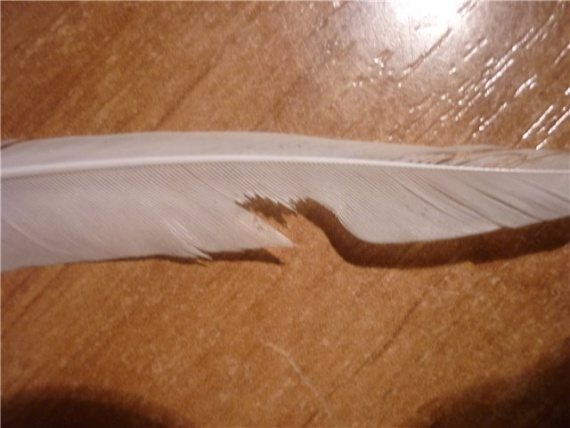

The sources where you could infect your bird may be different: this is not only that the purchased bird, but also the infected grain, your clothes, hair, if you have visited someone or at the bird market, taking the cage to the balcony or veranda, look to there was no contact with a wild bird, do not put the cage in the grass, it could be a new cage and accessories, wash everything and pour boiling water over it. In my everyday life, I like to disinfect 1-2 times a week: wipe the perches and the cell tray with a sponge with vinegar without diluting 9%.
Treatment of a downy eater: we buy FRONTLINE for mammals in a zoological store, as a rule, it is sold in the form of a spray and from there pour it into a glass of this remedy. Then, fixing the bird, drip it onto the scruff of the neck, pushing the feathers to the skin: for wavy and cockatiels, 2 drops, and for a bird weighing from an Amazon, 3 drops each. Repeat on days 8 and 10.
Be careful, your pet is as vulnerable as our kids. Love and take care of your pet and everything will be fine. Be healthy!
How to treat a tick in a parrot
Finding a tick causes panic and the question - what to do now.
First of all, the feathered friend is shown to the veterinarian. The doctor conducts a professional examination, if necessary, takes tests. When suspicions of the presence of a tick are confirmed, treatment is prescribed. He undergoes treatment at home, using special drugs and means, as well as using preventive measures.
Now, without a prescription, you can buy tick spray, which is actively used in preventive measures.
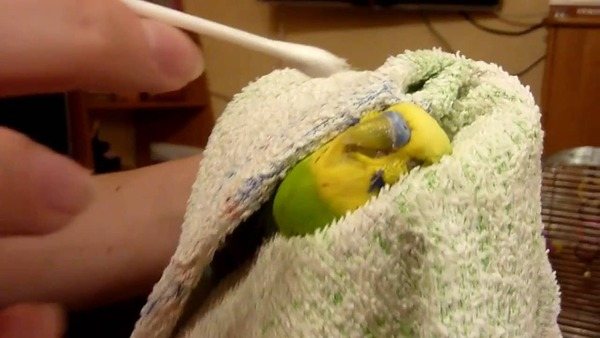

Reviews of the owners say that an ointment for ticks is in demand, namely: aversectin ointment. Its popularity is due to its reasonable price and efficiency. It is allowed to replace this ointment with petroleum jelly. The meaning of replacement is in cutting off oxygen to the habitat of the parasite, because of this it dies rapidly. However, such measures are used only if the drug is not available at the veterinary pharmacy.
During the treatment period, the bird is not released from the cage. Also, by all means, all existing neighbors in the cage are removed and the diet is revised, enriching it with vitamins to strengthen immunity.
Treatment methods
It is necessary to treat a quill mite in a parrot only after consulting a veterinarian; an independent examination will not always be able to answer all questions. Depending on the type of tick, it is removed with different preparations. The most effective are recognized:
- Aversectin ointment.
- Vaseline oil.
- Fipronil spray.
- Otodectin.
Important!
Most often, experts prescribe an ointment for ticks for parrots, it is easier to apply, and the effect is excellent.
The purchase of the designated agent is carried out only in the veterinary pharmacy, while attention is paid to the shelf life and the date of issue. It is imperative to control these moments, because most parrots are prone to allergic reactions and the substances that make up the composition will not always be the reason for this. An expired drug not only will not help in treatment, but can also kill the pet.
Treatment of pets is carried out as follows:
- It is advisable to carry out the processing in the evening, when the bird is already sleepy and will not be able to offer strong resistance.
- To apply the drug, cotton swabs are used, a new one is used for each organ.
- A small amount of ointment is applied to the soft part of a cotton swab and the affected areas are treated with light movements.
- It is necessary to carry out work extremely carefully so that the drug does not get into the eyes, breathing holes on the beak, plumage.
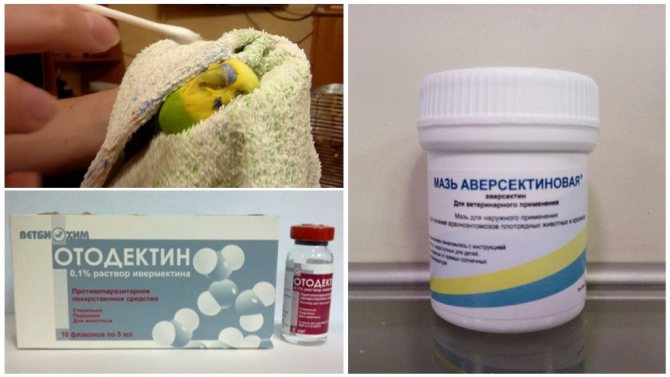

Parrot treatment
The treatment regimen is simple, the treatment is carried out once every five days. After the third such treatment, the pet becomes much easier.
On a note!
If the pharmacy does not have an ointment prescribed by a specialist, you can use petroleum jelly. The tool is applied in the same way, only once every three days. The oil forms an airtight film that does not give oxygen to the mites, they simply suffocate and die.
Prevention of re-infection
When winning a victory in such a difficult task, the owner is unlikely to want to repeat his feat. That is why they carry out a thorough cleaning of the bird's home, treating all objects with boiling water or a special disinfectant.
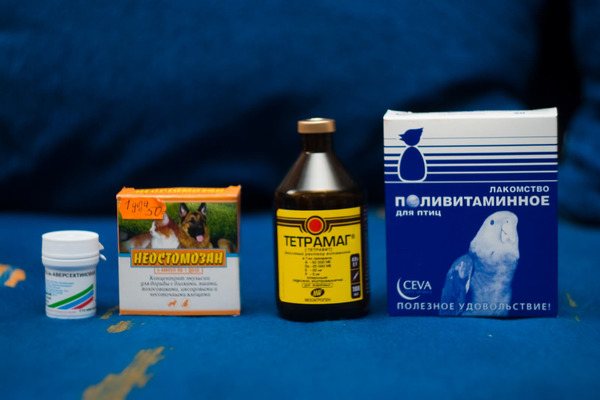

Processing will not work on wood and mineral stones. Wooden perches are replaced with plastic ones, stones are simply replaced.
It is also important to consult your veterinarian from time to time.
The reasons for the appearance of parasites
Birds with strong immunity are less susceptible to infection with scabies mites, but they can also suffer for the following reasons:
- poor quality feed;
- poorly disinfected or not treated at all birdcage with all the inventory in it;
- if the purchased parrot has not passed the required quarantine;
- not thermally processed fruits and vegetables;
- bird diseases, stress, vitamin deficiency, unhealthy diet.
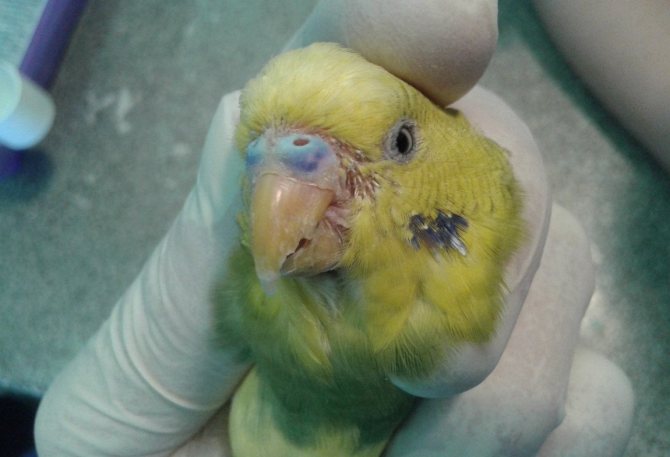

All conditions leading to a weakening of the bird's body can provoke the appearance of an itch mite on its body.
How does a parasitic disease manifest?
The mite is found in a parrot with an increase in the symptoms of knemidocoptosis. The main signs are:
- Changes in the structure of the skin: it becomes porous, loose;
- When the legs are damaged, bumps are formed, which occurs as a result of flaking of scales from the surface, gradually these formations increase in size;
- At the last stage of infection, inflammatory processes develop in the joints, tissue necrosis, limbs can die off;
- Itching, and its intensity increases, the pet begins to gnaw the paws and other affected areas;
- A yellowish bloom appears on the beak, the shape and size change;
- With a strong lesion, porous growths form on the beak.
When you try to scratch the area where mites are parasitic, the risk of breaking the integrity of the skin increases: scratches and other damage appear.
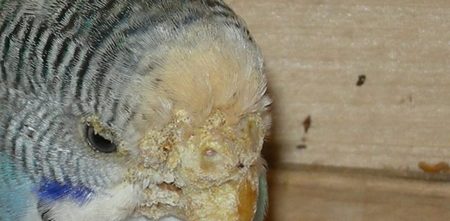

A light bloom, similar to calcareous, around the beak and on the legs of a parrot indicates infection
What stages of scabies are distinguished?
First of all, it should be noted that the incubation period of the parasitic disease is long-term and lasts from 4 months or more. The main stages of the disease:
Stage 1: Initial
Parasites do not manifest themselves in any way. As the number of toxic waste products multiplies and increases, the first signs will appear, but this will not happen right away. This feature does not allow detecting the disease, and timely treatment.
Stage 2: Light
Symptoms gradually appear. You may notice a change in the color and structure of the skin. First of all, paws, wax are affected. Signs: lime shade; the formation of growths; exfoliation of epithelial particles; biting a limb, standing on one leg; traces of tick activity are noticeable in the corners of the beak.
Stage 3: Medium
There is a significant deterioration in the condition of the pet: limbs, beak, area around the eyes and cloaca are affected. The deformed beak prevents the parrot from absorbing food normally. The pet gnaws feathers, becomes lethargic, inactive. At the same time, it is obvious that it is necessary to quickly cure the bird from the tick.
Limbs, beak, eye area and cloaca are affected
Stage 4: Severe
Most of the feathers have already fallen out, the beak is strongly deformed, traces of ticks are noticeable on different parts of the body. The parrot can be brought to such a state by the extreme indifference of the owner.

